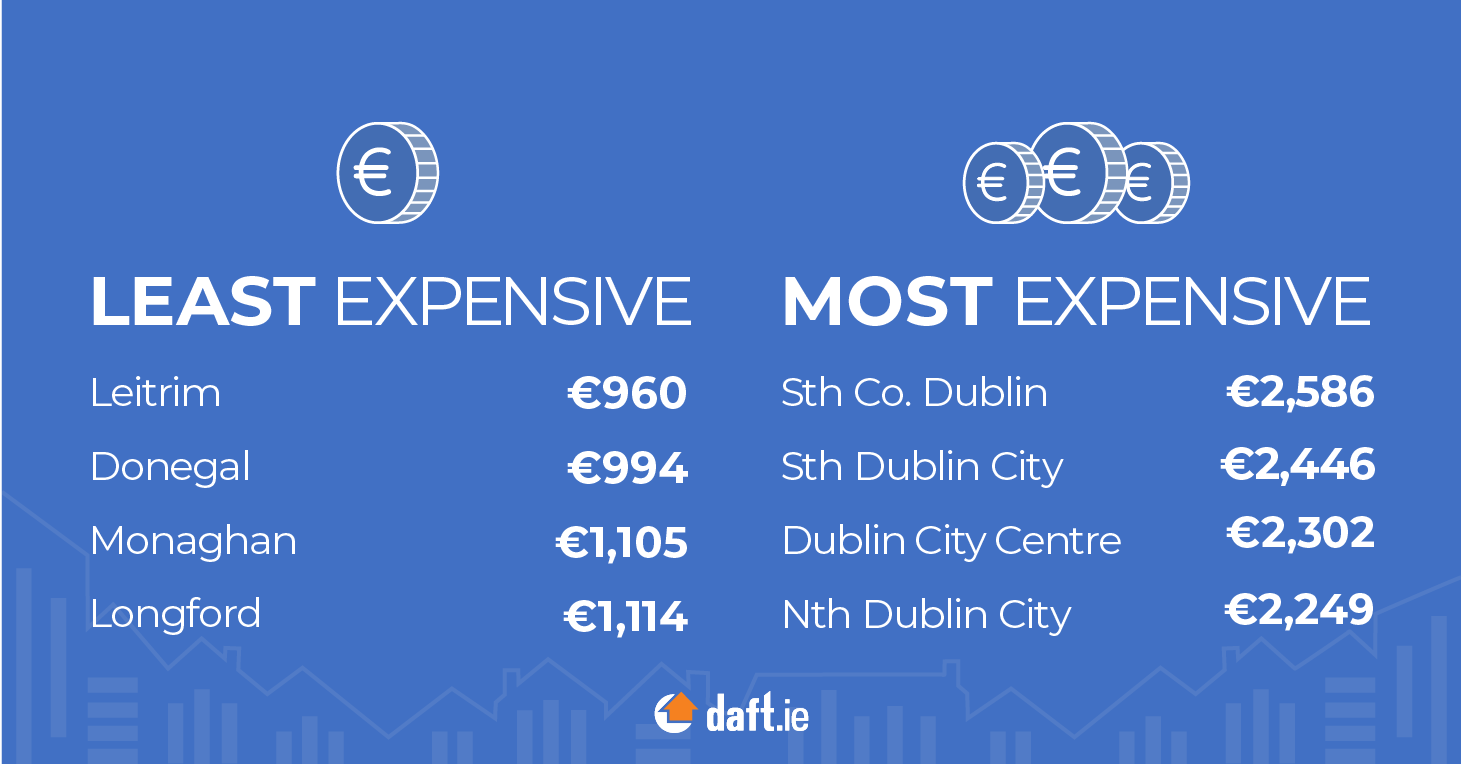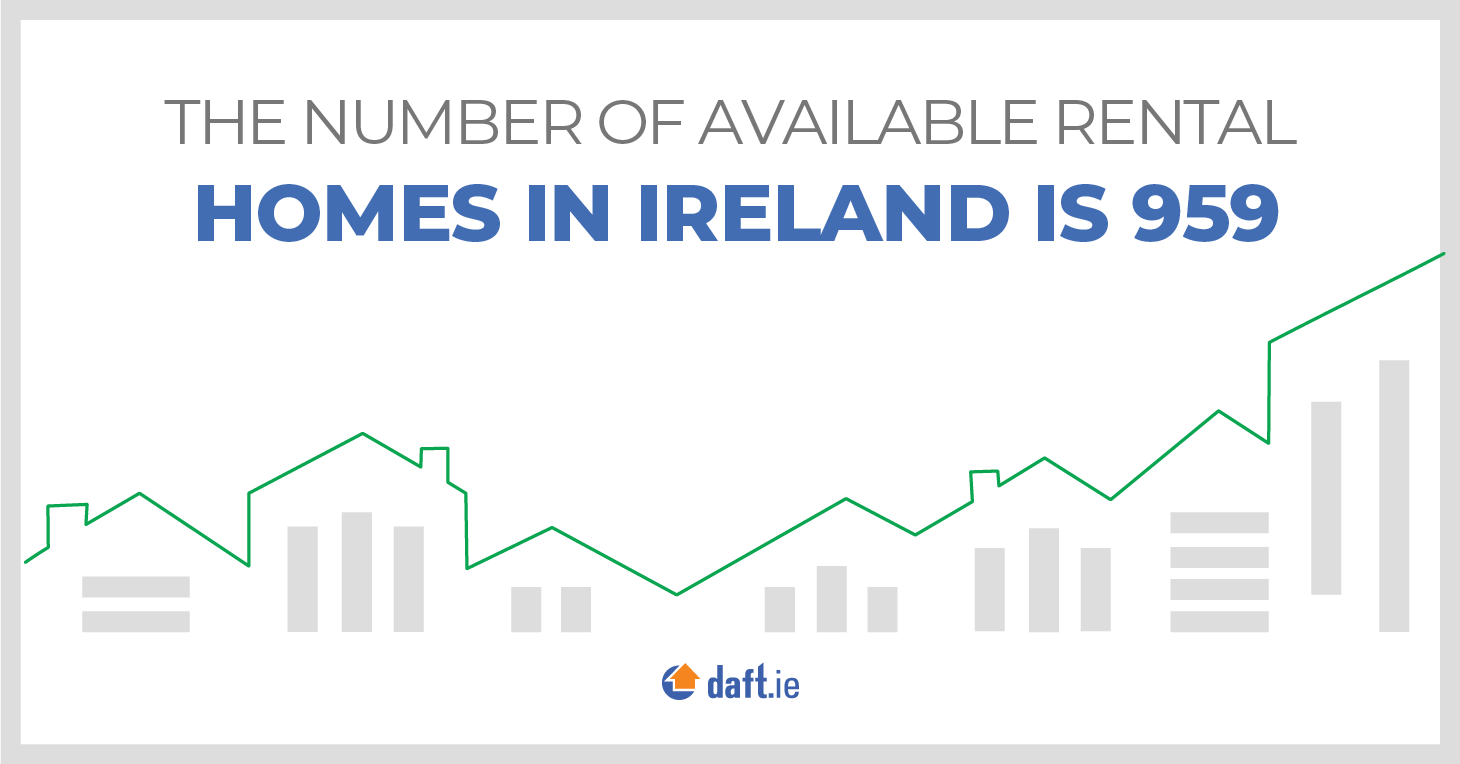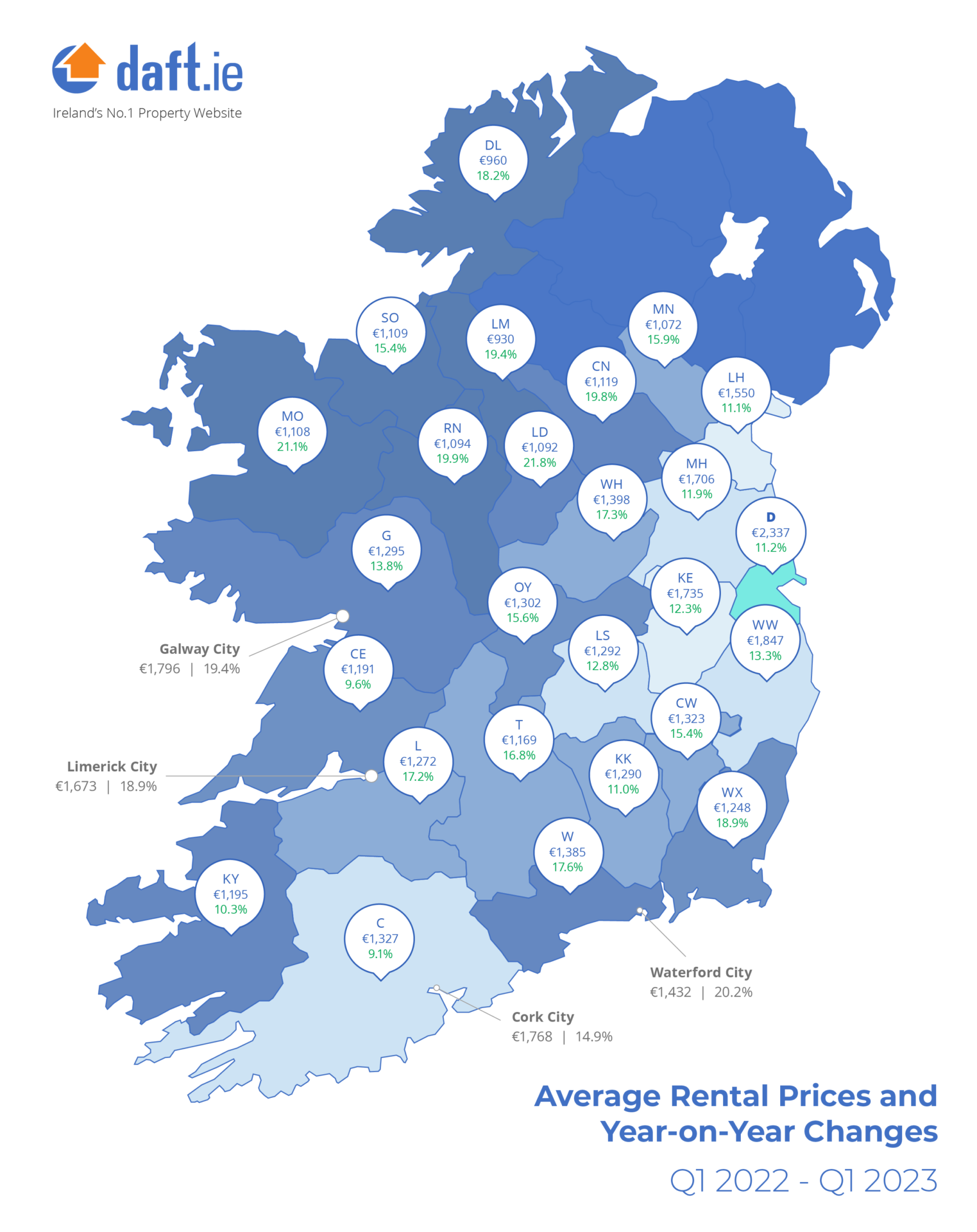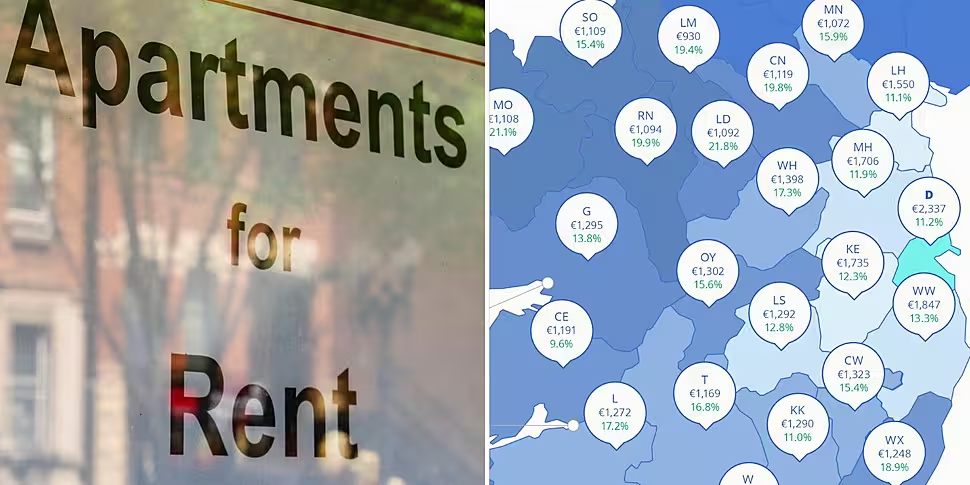Market rents in the first quarter of the year were an average of 1% higher than in the final three months of 2022 - the smallest increase since 2020.
That's according to a new Daft report, which found the average market rent nationwide between January and March was €1,750 per month - compared to €1,387 in the first quarter of 2020, and a low of just €765 per month seen in late 2011.
Compared to a year ago, however, market rents are 11.7% higher - reflecting "large increases seen during 2022."
There were significant regional differences in how rents changed in the first quarter.
 Source: Daft.ie
Source: Daft.ieIn Dublin, rents rose by 0.5% quarter-on-quarter, the same rate seen in the rest of Leinster.
However in the four other cities, rents fell in the first quarter by 1.8% on average.
In the case of Cork city, this is the first time in almost a decade that rents have not risen quarter-on-quarter.
In Munster, Connacht and Ulster - outside the cities - rents continued to rise strongly in the first quarter of the year, by 3.8% on average.
In Dublin, market rents were on average 11.2% higher in the first quarter of 2023 than a year previously.
The average listed rent is now €2,337 - up 128% from its lowest point in 2011.
Average market rents, and year-on-year change, 2023 Q1
● Dublin: €2,337, up 11.2% year-on-year
● Cork city: €1,731, up 7.7%
● Galway city: €1,772, up 11.8%
● Limerick city: €1,645, up 10.8%
● Waterford city: €1,399, up 10.8%
● Rest of the country: €1,373, up 12.7%
Daft has said the upward trend in market rents around the country is driven by "extraordinary shortages" in availability of rental accommodation.
Nationwide, there were just 959 homes available to rent on May 1st.
While this is up 13% on the same date last year, it still represents one of the three lowest totals for availability at the start of the month dating back to 2006.
 Source: Daft.ie
Source: Daft.ieThe availability of rental homes in Dublin has fallen dramatically since the start of 2021, with just 467 live rental ads on May 1st - largely unchanged on a year ago.
Report author Ronan Lyons said there are several factors.
"The private rental market has been under increasing stress over the last two years, as first society re-opened after the COVID-19 pandemic and then the war in Ukraine led to a refugee crisis," he said.
"There are some signs that, if things are not getting better, then they are getting much worse.
"Availability of homes to rent has stopped falling, albeit at extremely low levels, while the quarterly change in rents seen January to March was far smaller than the average increase seen in 2021 and 2022".
 Source: Daft.ie
Source: Daft.ieMr Lyons said the number of available newly-built rental homes is likely to reduce unless action is taken.
"The solution to Ireland's rental housing shortage requires significant action by policymakers," he said.
"The number of rental homes coming on to the market in newly-built developments has held up in recent months but is likely to reduce in the quarters ahead, unless issues around planning certainty and viability are addressed.
"Ultimately, policymakers must have a clear plan on how tens of thousands of new rental homes will be delivered this decade in all major towns and cities," he added.









